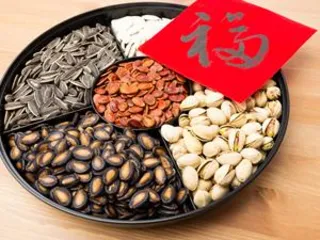Will eating melon seeds make you fat? Can I eat it during the weight loss period?

When everyone watches computer dramas at home, they like to watch variety shows while eating melon seeds. Melon seeds are a small snack with a little salty taste and can be easily eaten too much. Many people will ask, will eating melon seeds make you fat? Can we eat melon seeds during the weight loss period?
Will eating melon seeds make you fat?
The melon seeds themselves are quite nutritious, and the vitamin, protein and oil content are among the best. However, melon seeds are also a high-calorie food. The calories of melon seeds are 597 kcal, 23.9 grams of protein, 34.53 mg of vitamin E, 49.9 grams of fat, and 264 mg of magnesium. Such high-calorie food can easily gain weight once you eat too much.
Eat a small amount, the nutritional value is still good!
1. Although the fat content in melon seeds accounts for about half, the fat in melon seeds is mainly oleic acid and linoleic acid, saturated fat only accounts for 14%, and there is no cholesterol. Moderate amounts of oleic acid and linoleic acid have the effect of lowering total cholesterol and "bad cholesterol" and are beneficial to the body.
2. Melon seeds contain 20% to 30% protein, and also contain a large amount of vitamin E, folic acid, magnesium, potassium, copper and dietary fiber and many other important nutrients.
3. The melon seeds are protected by a strong shell, and there is no need to artificially open a crack during processing. Therefore, compared with other exposed nuts, the fat, vitamin E, etc. in the melon seeds are not easily oxidized, and the melon seeds are preserved relatively completely. The nutritional ingredients are a good choice for nuts.
It's not that you can't eat melon seeds, but you should pay attention to the amount of melon seeds you eat. Moreover, eating melon seeds can make you thirsty. Everyone remember to drink more water.

[Benefit: Come and see how you should lose weight?]
Want to lose weight healthily in 2016? Want to know what is the right way to lose weight for you?